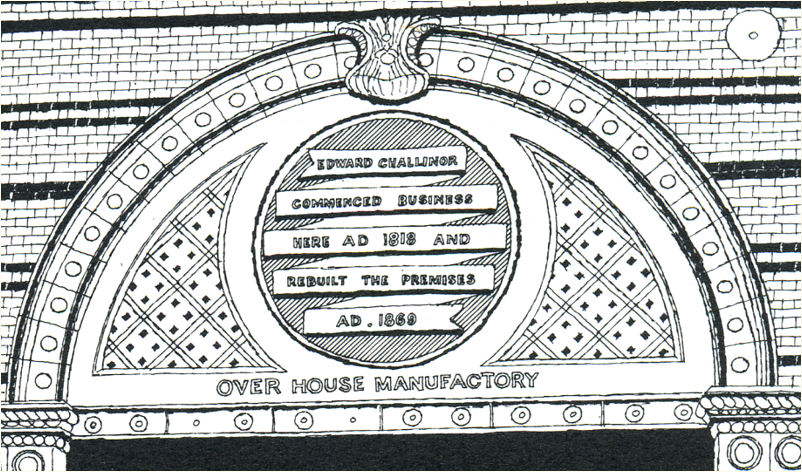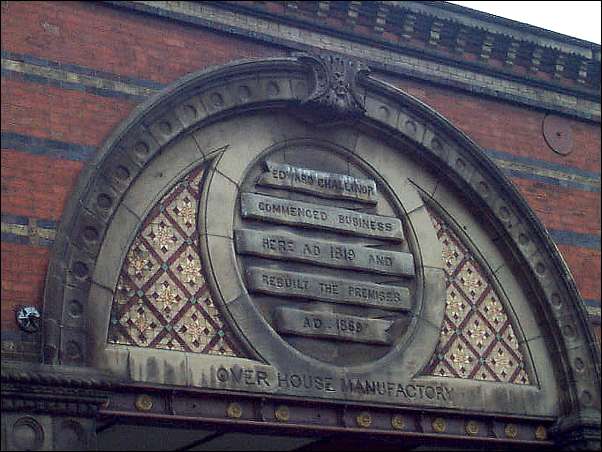|
|
|
![]() back to "The Grand Tour" index
back to "The Grand Tour" index
Neville Malkin's "Grand Tour" of the Potteries
buildings of
Burslem
![]()
![]()
![]()
next: Queen's Theatre
previous: Burslem
Sunday School
contents: index of buildings of Burslem
|
No 43 - Overhouse Manufactory The old works were situated at the back and side of the Overhouse, with entrance in Wedgwood Place, where that street joined Scotia Road. They were operated from 1787 by Thomas Wedgwood
The old works were entirely taken down and a
new and extensive manufactory was erected in 1869 - it stands on the site
of Wedgwood's Over House Estate |

Overhouse Manufactory, Burslem
pen drawing by Neville Malkin -
Jan 1975


|
"A
great many of the more interesting 19th century pottery factories have
long since been demolished, or replaced by inferior asbestos and
concrete box-like buildings that unfortunately do not reflect in any
way the creative work that goes on within their walls. But, with a
little investigation, you can still discover some real gems that have
managed to survive. It was refreshing to find this particular factory
entrance at the Overhouse Manufactory, Burslem, better known as
Barratts. The carved inscription in stone above the entrance proudly announces that "Edward Challinor commenced business here A.D. 1818 and rebuilt the premises A.D. 1869. Over House Manufactory." This statement is surrounded by a variety of ornamental embellishments created from local materials such as ceramic tiles and colourful bricks. Fortunately for this building it appears to have had a recent facelift, but too many have been allowed to decay. I would assume that this factory stands on a site previously occupied by a large, high-class dwelling known as the Over House, and that this and the Big House were occupied by two branches of the Wedgwood family during the 18th century. As so many potteries developed from cottage-type industries, it might be that Edward Challinor purchased the house or its adjoining land and so began his pottery. The only oddity about this building is that there is no mention of a pottery on this site nor of a Mr. Edward Challinor in an 1839 directory of Burslem, which is quite comprehensive and lists all the pottery manufacturers, big and small."
|
| "The Overhouse Works,
Wedgwood Place. In 1787, the record runs, "Thomas Wedgwood, Manufacturer of Cream-coloured Ware and China glazed Ware, painted with blue" worked the Overhouse Pottery at Burslem. The old works were situated at the back and side of the Overhouse, with entrance in Wedgwood Place, where that street joined Scotia Road.
Twentieth-century owners include Gater,
Hall & Co., King & Barratt, and Barratts of Staffordshire Ltd. Jewitt's
Ceramic Art of Great Britain 1800-1900 |
![]()
![]()
![]()
next: Queen's Theatre
previous: Burslem
Sunday School
contents: index of buildings of Burslem
back to "The Grand Tour" index